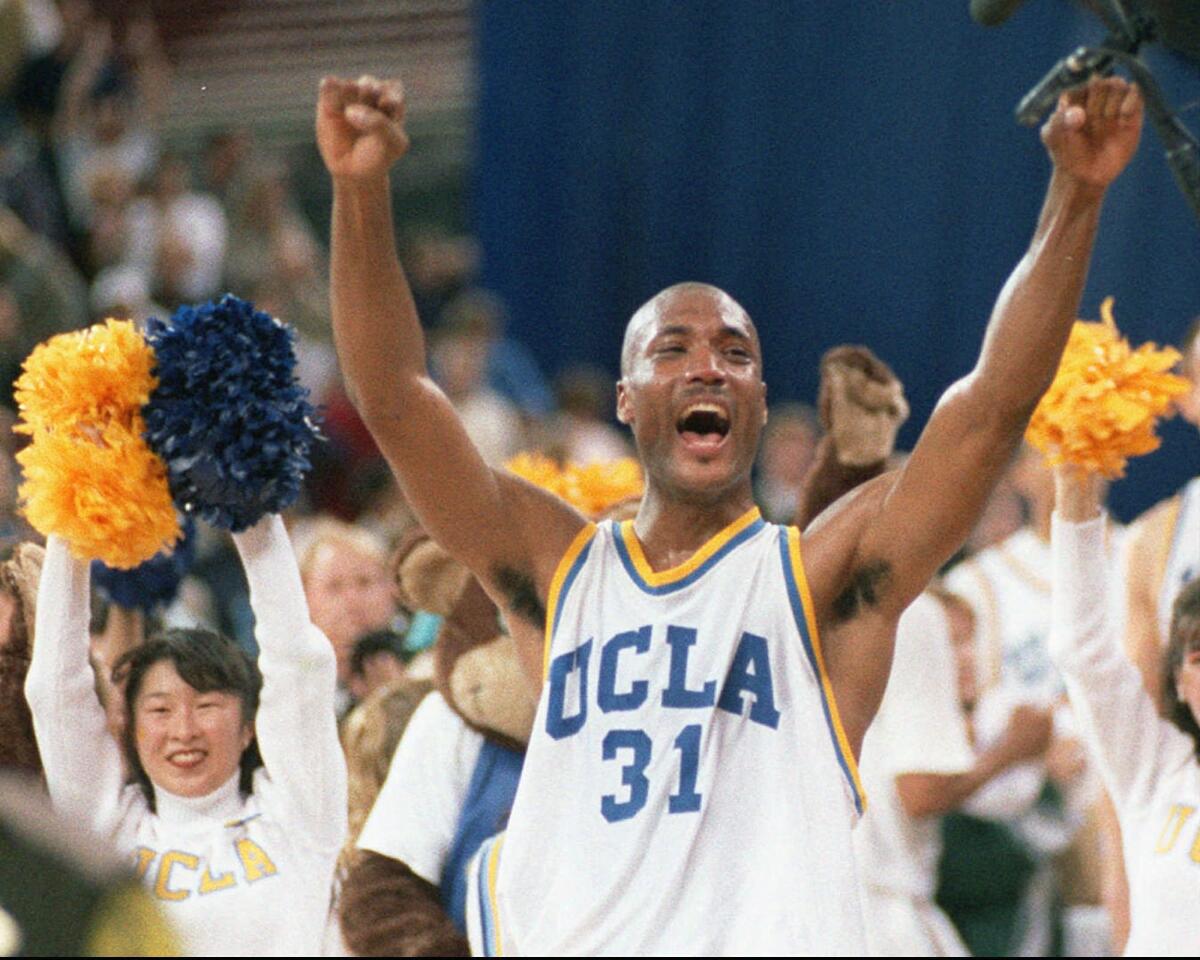Editorial: Fairness for college athletes

- Share via
In ruling that the National Collegiate Athletic Assn. illegally restrained competition for top student football and basketball players, U.S. District Judge Claudia Wilken could have obliterated the last remnants of amateurism in major college sports. Happily, she didn’t. Instead, her ruling Friday upheld the association’s ability to limit the compensation paid to students during their collegiate years while also allowing athletes to benefit more from the fruit of their labors — for starters, by obtaining enough aid from schools to cover all the costs of going to college. It’s a better balance. Now it’s up to the colleges covered by the decision to return more of the money to the students who generate it.
The lawsuit, brought by former UCLA basketball player Ed O’Bannon, challenged the NCAA rule requiring student athletes to give up any claim to the revenue from television broadcasts, replays, highlight reels, videogames and any other use of their names, images or likenesses. Broadcasts in particular have been a cash cow for about 350 colleges and universities in the NCAA’s top tier, generating billions of dollars in fees.
Wilken found that the association violated antitrust law by effectively fixing the price student athletes could command from the most desirable schools. She rightly dismissed the NCAA’s spurious arguments that its limits on compensation promoted competitive balance, attracted more fans or helped integrate athletes into the student body. Those are all legitimate aims, but they’re not served by barring students from receiving any of the licensing revenue.
Considering how much money they make, major-college football and basketball programs carry more than a whiff of exploitation. Granted, plenty of recruits view college as little more than an extended tryout for the NFL or the NBA, with the occasional distraction of having to pass a test. But the fact that recruits who have been promised “full ride” scholarships covering tuition, room and board can still be saddled with thousands of dollars in costs — especially if they’re hurt or lose their spot on the roster — only reinforces the feeling that the playing field is tilted in the colleges’ favor.
Wilken’s ruling allows colleges and universities to compete for student athletes by offering more aid (up to the “full cost of attendance”) and a share of the fees for using their names and likenesses, payable after they leave college. Her injunction, which is to take effect in 2016, adds to the growing body of rulings and decisions favoring student athletes; notably, the NCAA’s board of governors agreed last week to let five major-college conferences set their own limits on aid to student athletes, potentially allowing them to cover the full cost of a college education as well as providing better health and insurance benefits. These steps give colleges the opportunity to treat athletes more fairly without turning them into professionals. The schools shouldn’t hesitate to take it.
More to Read
A cure for the common opinion
Get thought-provoking perspectives with our weekly newsletter.
You may occasionally receive promotional content from the Los Angeles Times.










